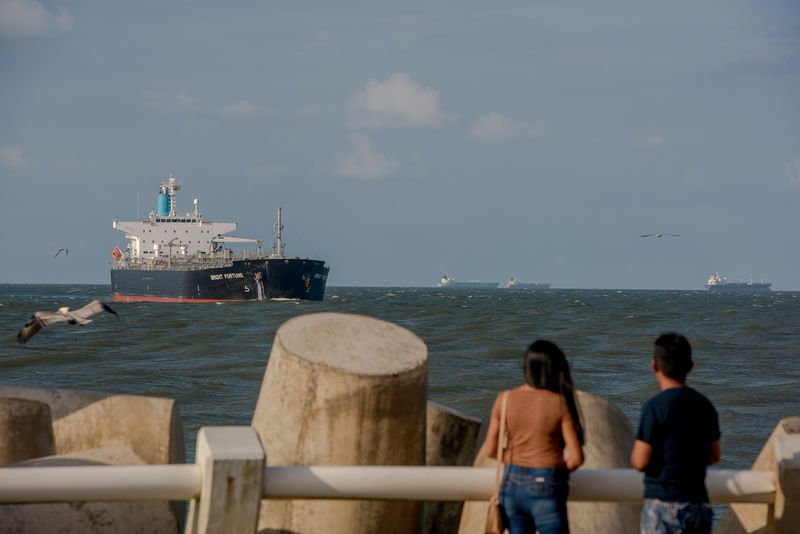LONDON (Reuters) - Crude and condensate in long-term floating storage hit its highest since August 2017 in May at 24 million barrels, as U.S. sanctions against Venezuela and Iran hindered the ability of the OPEC members to export, data from analytics firm Vortexa showed.
Floating storage rose 15 million barrels in May compared with average levels of May 2018, and levels this month have already reached 26 million barrels, the data showed on Friday.
(Graphic: Crude and condensate in long-term floating storage png link: https://tmsnrt.rs/2FmAel0).
"The rise in long-term storage appears to be driven by the impact of sanctions on Iran and Venezuela, trapping more heavy barrels in offshore storage," Vortexa said.
Oil production in the two countries has fallen sharply since the United States imposed sanctions which have significantly impacted their ability to sell crude.
(Graphic:Oil under santions png link: https://tmsnrt.rs/2FogeOV).
Iranian crude exports in May were around 400,000 barrels per day according to tanker data and industry sources.
In January-May 2019, oil floating off Venezuela accounted for 23% of global floating storage, rising to 32% in the second quarter so far. This compares with 11% in 2018.
There are currently 13 vessels in long-term storage floating off the Venezuelan coast, Vortexa data shows.
"The trend is even more marked when looking at Venezuela-origin crude additionally held in storage in the Caribbean region," Vortexa said.
Floating storage in the Middle East had a 21% share in the first five months of this year, stable from 2018 levels, though Vortexa said the level of storage in the region could be higher due to unobserved offshore storage activity in Iran.
In Europe there are five tankers holding around 3.5 million barrels of Russian Urals crude that loaded from the Baltic port of Ust-Luga between April 23 and May 5, Vortexa said.
Russia's Druzhba pipeline to Europe and the Ust-Luga port have been contaminated with organic chloride, which can damage refining equipment.

Vortexa considers a vessel to be in long-term floating storage when it is laden and has been stationary for 30 days or longer.